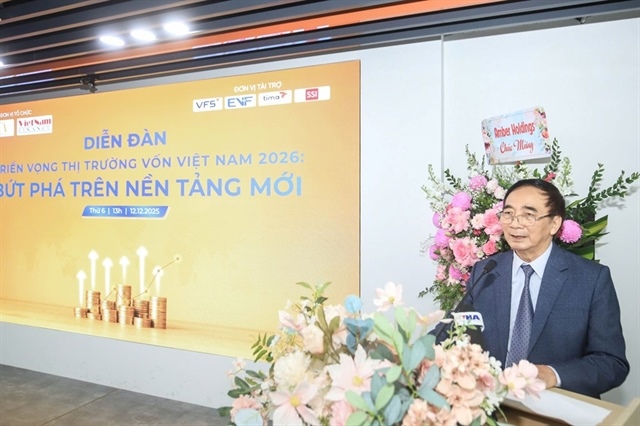Lending rates remain stubborn
Lending rates remain stubborn
Joint stock banks’ lending rates have yet to be relaxed a week after the State Bank’s base interest rate cut.

“We still suffer 16.5 per cent, per year lending rates on our old loans from last year. Banks said they could only slash the rate to new short-term loans, whereas that of old loans could not be softened since in the past they bore high mobilising rates,” said director Tran Dinh Hoa at Hanoi’s Dong Tam JSC, operating in construction field.
State Bank (SBV) deputy governor Nguyen Dong Tien said 14 per cent of total outstanding loans reported lending rates above 15 per cent, per year, focusing on the joint stock bank segment.
Not only old loans, fresh loans also feature fairly high rates. Accordingly, consumer loans generally report lending rates from 14-15 per cent, per year.
For instance, at this time Maritime Bank offers 15.5 per cent, per year lending rate to prospective home buyers.
Similarly, the rate stays above 14 per cent, per year at several other banks like VPBank, Vietnam International Bank (VIB) and Saigon Commercial Joint Stock Bank (SCB). Some banks offer customers concessionary rates in several initial months of the loan.
“State banks, with established reputations, expansive operational networks and an ability to approach low-cost capital sources from the SBV, could strongly reduce their lending rates, meanwhile most joint stock banks could not do so since they incur higher mobilising costs and lower liquidity,” said LienVietPostBank deputy chairman Nguyen Duc Huong.
Vietnam Bankers Association secretary Tran Thi Hong Hanh said a number of factors would involve behind joint stock banks’ decision on lending rates such as their liquidity, risk management capacity, governance capacity and customers’ prestige.
“Small banks are facing a host of hardships. Many of them had executed massive lay-outs in the past months to save costs. We expect restructuring steps could help banks boost retail and operation efficiency, from there pulling down lending rates,” said Hanh.
From the part of state management authorities, the SBV said it could not interfere into banks’ setting their interest rates but only deliver policy orientations and call for support from commercial banks.
“Lending rates reflect the relations between people and credit institutions, the State Bank could not get involved. Credit entities’ interest rate divergence was attributed to their different operational targets, mobilising cost prices and customers risk appraisal degrees,” said head of SBV’s Monetary Policy Department Nguyen Duc Long.
In the long haul, the SBV would consider removing mobilising cap in an appropriate time when banks’ liquidity steadily improved, Long said.
Economic experts assumed there was still room for lending rates to further drop, but it would depend on banks’ health and their willingness to share firms’ difficulties
vietnamnews


























